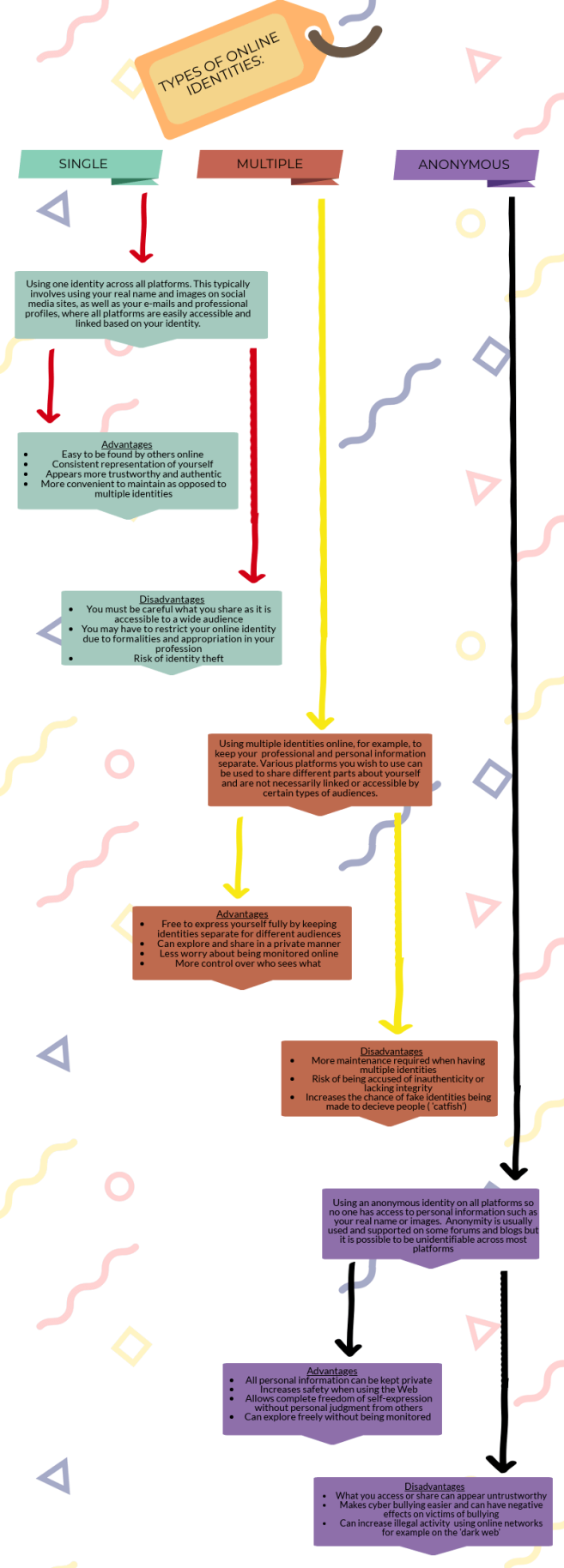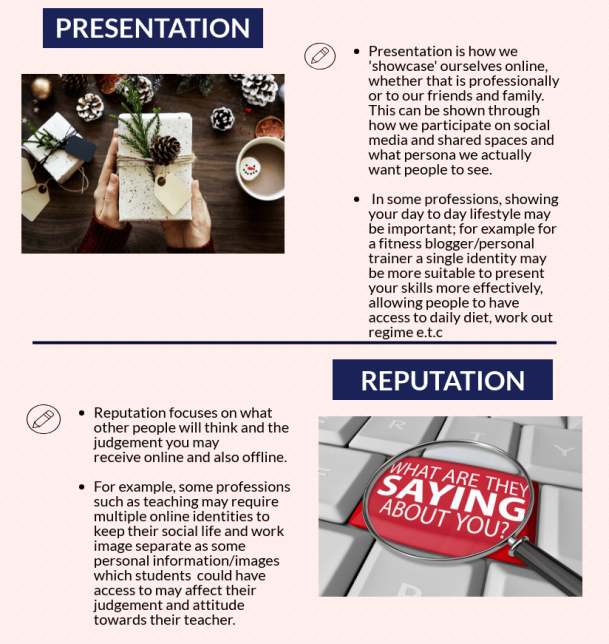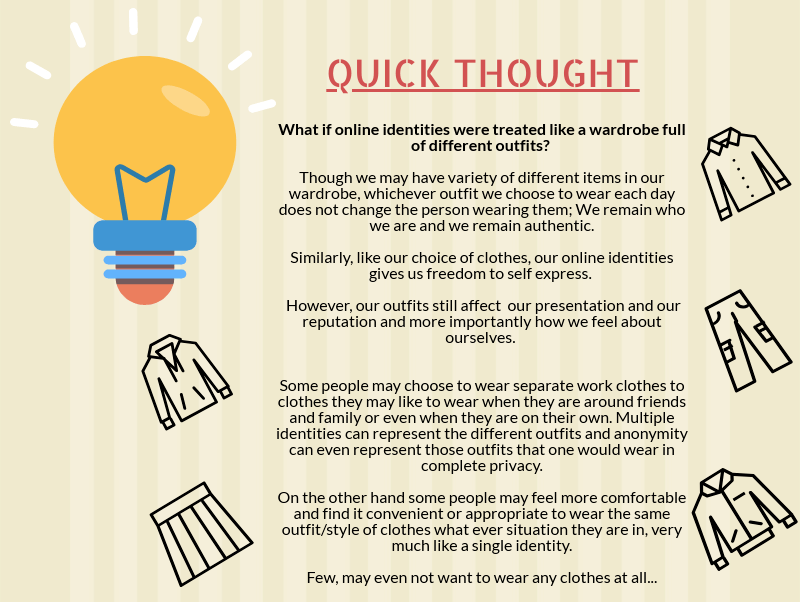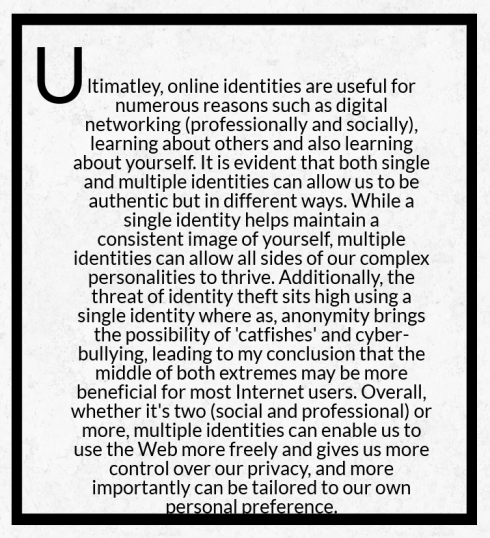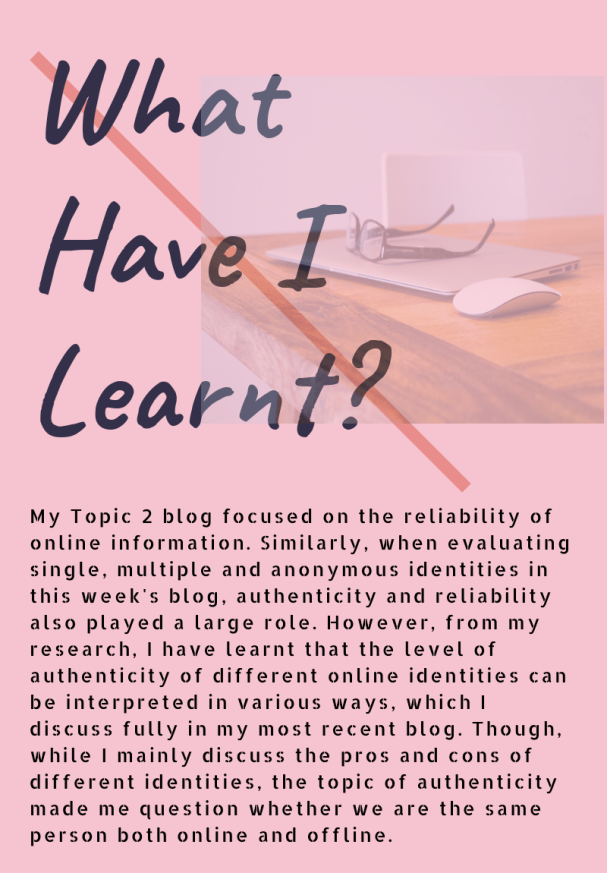
 My Discussions:
My Discussions: 
I discussed this matter further with Tewsdae, who mentioned that people used online identities in the past to detach themselves from real life. At first, I didn’t agree, but upon discussion she pointed out a blogger who posts a more “unfiltered” reality on motherhood. Though this is not complete escapism, it made me realise that people can still use a single identity to express views online which they may not necessarily share as freely offline.
In addition, Tewsdae questioned whether I felt sharing less flattering content online is inauthentic. While I explained in my comment I do not think this contributes to inauthenticity, it made me reflect on my blog and the advantages I had included about single identities; previously I said a single identity can appear more authentic. But if you can hide unflattering content, how does this make such an identity any more authentic than using multiple identities?
Although I have learnt that the question of authenticity is far more complex than it seems, I also think that the line which separates identities, such as single and multiple, is blurred based on the content you share and how you share it. However, when tackling issues that affect all types of identities, such as cyber bullying and identity theft, we should focus more at how to stop and prevent it so that all identities can be seen as equally beneficial to use. Iarina helped me develop this thought when she pointed out the tragic case of Amanda Todd and how many social media platforms now combat such issues; Facebook and Instagram (which are mainly used for a single identity) have a system so one can report spamming and misbehaviour, while Reddit (which can be used as part of multiple identities) uses moderators to counteract harassment and propaganda.
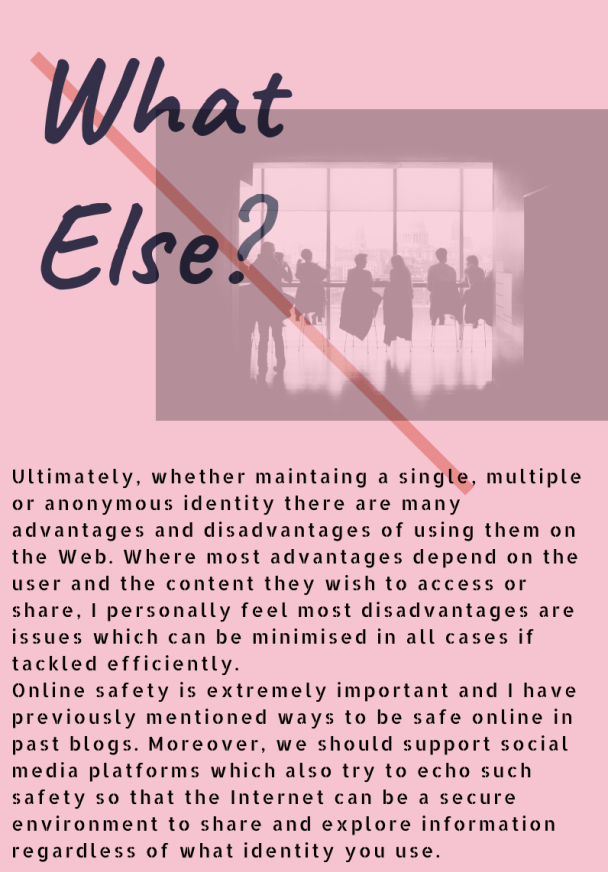
Word count: 300
References:
- Klimmt, C. (2015). Escapism, The Concise Encyclopedia of Communication, Available at: http://www.blackwellreference.com/public/tocnode?id=g9781118789308_chunk_g97811187893088_ss1-17
- Truong, K. (2017). This Mom Made a Powerful Point About Motherhood on Social Media vs Real Life, Refinery29.com, Available at: https://www.refinery29.com/2017/02/141897/mom-blogger-instagram-reality?bucketed=false&bucketing_referrer=https%3A%2F%2Fwww.google.co.uk%2F
- BBC News, (2017). Amanda Todd case: Accused Dutch man jailed for cyber-bullying, bbc.co.uk, Available at: http://www.bbc.co.uk/news/world-us-canada-39295474
- The Guardian, (2015). Reddit announces anti-harassment policy in attempt to curb cyber-bullying, theguardian.com, Available at: https://www.theguardian.com/technology/2015/may/14/reddit-anti-harassment-policy-cyberbullying
- Browne, R. (2018). Reddit bans nearly 1,000 accounts linked to Russian ‘troll farm’, cnbc.com, Available at: https://www.cnbc.com/2018/04/11/reddit-bans-accounts-linked-to-russia-internet-research-agency.html


